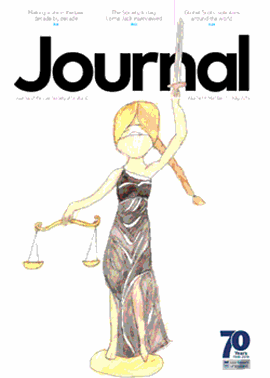Those of us who act for the licensed trade have to be much more than licensing lawyers. Whether or not your practice includes other areas of law, the likelihood is that you will be the first point of contact on legal problems.
Most business lawyers make sure they have a wide enough knowledge base to be able to anticipate other issues which may arise. For example, very few of us will be tax experts, but we should know enough to highlight the fact that a particular transaction may have tax implications, and be able to direct the client accordingly. Yet, in my experience, rating seems to be a blind spot for most in our profession.
Revaluation shock
March saw the issuing of the rates revaluation notices, the first since 2010. The new figures have been available on the Scottish Assessors Association (SAA) portal since January, but they will have come as a shock to many of our clients.
The theory is that rateable value is, or should be, equivalent to the amount of rent that the property might reasonably be expected to achieve on the open market. For most properties it is based on floor area. Licensed premises, however, are treated differently, turnover being the main criterion. It is a complex area, but there are practice notes, intended to secure consistency of approach among the 14 rating areas. You will find the 2017 practice notes here.
One area of controversy is the fact that the assessor may take into account not only actual turnover, but hypothetical achievable turnover (HAT). This is a grey area. It is probably fair in the case where, for whatever reason, a pub is being opened for trade only a couple of days per week. Where we get into murkier waters are cases where the assessor takes a view that the occupier could be doing better, a decision often being taken in ignorance of the full facts.
Behind the headlines
It has to be said that ignorance is at the root of many of the hard cases. Licensees are not the best at dealing with paperwork. Wearing my other hat as chair of a licensed trade association, I discovered that many failed to submit the statutory returns giving actual turnover figures. In such cases the assessor had no choice but to make an informed guess. It is likely that this guess will have been based on rental figures provided by the large pubcos.
The trouble with that is that the assessor will have the headline rent figures, which may well not reflect the true position. In these tough times, many landlords have to provide inducements. They will never reduce the headline rent, as that impacts on their overall company valuation. Sweeteners to the tenant may take the form of a reduced rent documented by a private back letter, or by some relaxation on the trade tie or the machine income (although the latter is much less significant than it was in the past).
There is a right of appeal, which must be exercised within six months. Obviously specialist advice should be taken, although a call to the local licensed trade association (if there is one) might be the first step. Those with a rateable value below £15,001 will be exempt from any payment (the figure since 2010 was £10,001). The Scottish Government announcement of a cap of 12.5% on any increase was welcome; however, make sure your clients are aware that this is funded for one year only. There is no guarantee that the new rateable values will not be enforced in full come April 2018.
In eight cases my association managed, in the space of a month, to get five pubs below the exempt threshold, and in three others we secured reductions of £8,000, £9,000 and £43,000 respectively. Have the conversation with your clients. If you are the instrument which saves them a lot of money they should be very grateful.
In this issue
- Pursuers' offers: proceed with care (1)
- Article 50: today, tomorrow and the two-year myth
- Tackling bribery: follow the US?
- Small holdings, big complexities
- Brexit: white paper, muddy waters
- Reading for pleasure
- Opinion: Caroline Kelly
- Book reviews
- Profile
- President's column
- Land Register applications – the inside view
- People on the move
- Help on our shores
- The importance of thinking differently
- A new crime scene
- Embarking on the UK-EU negotiations
- Pursuers' offers: proceed with care
- From discount to premium
- The law, standing accused
- Equality – the global agenda
- The Discount Rate – what next?
- It's not over until it's over!
- Sheriff and jury – the big changeover
- Rates? Sorry, can’t help you there
- Looking beyond the U-turn
- Planning gain all round?
- Scottish Solicitors' Discipline Tribunal
- Nil rate IHT and the family home
- Voice of experience
- Quality Assurance Criteria amended
- Law reform roundup
- Ask Ash
- All change in the PRS
- I think you would like this
- Master Policy – what will be different?
- Scottish Arbitration Survey: please help
- Q & A corner: client due diligence at a distance
- Cybersecurity demystified
- Confidentiality and third-party complaints
- 1,000 student associates!







